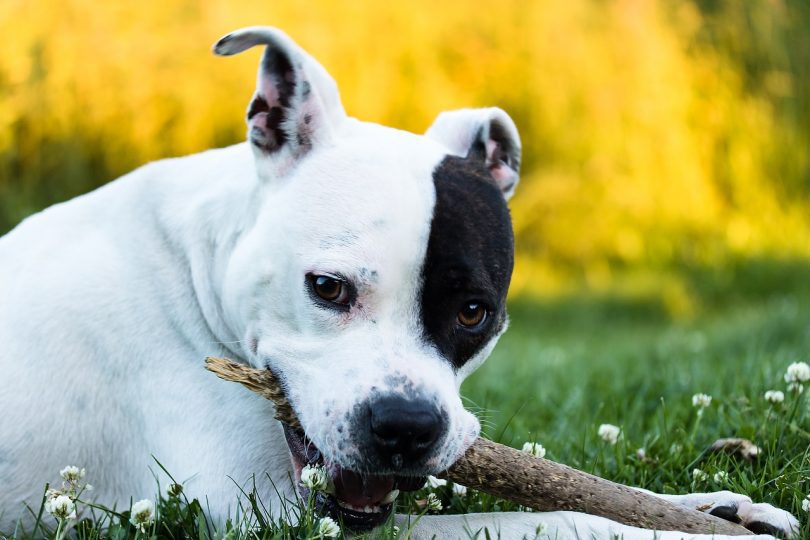We’ve all heard the stigma and stereotypes that revolve around American Staffordshire Terriers but it’s important to keep in mind that in most cases, the stories you hear shouldn’t be blamed on the dogs. Believe it or not, if you’ve been thinking about adopting a new BFF, this could be the dream breed you’ve been searching for.
However, it’s important to make sure that you are prepared. Therefore, before you rush out and sign the dotted line and offer one of these fur babies a new furever home, you should take these important facts into consideration.

American Staffordshire Terrier Adoption – Know The Facts
1. History
2. AmStaff Vs. Pitbull
3. Temperament
4. Training
5. Lifespan
6. Weight and Size
7. Shedding
8. Are They Hypoallergenic?
9. Allergies
10. Cost
1. American Staffordshire Terrier History
AmStaffs have a lengthy and interesting history. Believe it or not, this breed can be traced all the way back to the 19th century. Their roots lay in England where bulldogs and terriers were cross bred in an effort to create a new breed that possessed the best traits of each. The results were amazing and created a dog that is full of energy, confidence, and agility.
Unfortunately, there are some dark times in this breed’s history. Shortly after being discovered, they were commonly used as fighting dogs throughout the United Kingdom. However, once this breed found its way to the United States that quickly changed and AmStaffs were most commonly used as farm and work dogs. These days, Staffies make incredible companion dogs and can also be trained to hunt.
While they may not be the best fit for every household, it’s important that the stigma revolving around them comes to an end. Their history as a fighting breed was no fault of their own and their past should not be held against them.
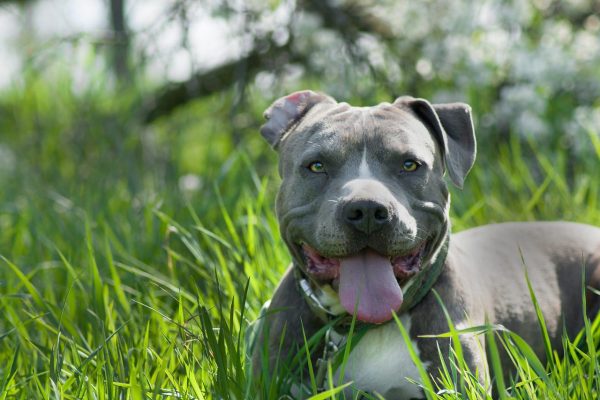
2. Is An American Staffordshire Terrier A Pitbull
Pitbulls and Staffies are very similar, but they are actually different breeds and have been breed entirely separately for over 50 years. However, the only differences between the two comes down to their appearance, size, and acceptance by the AKC. Many people would be surprised to learn that there is, in fact, no such breed as a pit bull. That name is simply a shortened version of the actual name which is American pit bull terrier.
One important thing to keep in mind before adopting though is that even though these two dogs come from separate breeds, they both get classed as a pitbull breed. Therefore, AmStaffs fall under the same legislation as their close relative and for this reason it’s necessary to research whether or not they are allowed in your state, city, or neighborhood before trying to bring one home. Even in some areas where they are allowed, they have strict rules they must follow including being muzzled while one walks them and more.
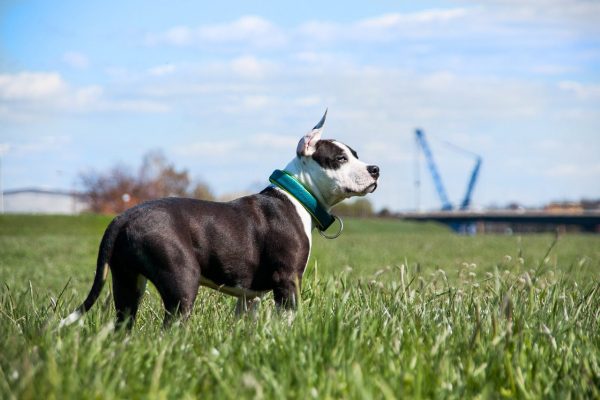
3. American Staffordshire Terrier Temperament
Contrary to what many people believe, this breed is actually very affectionate. In fact, they would much rather spend time around their humans than to be alone. They are also incredibly loyal and will often go out of their way to please their family. Some dogs from this breed will do better with children than others, but overall, they make excellent family dogs. However, this is a breed that can be somewhat challenging to have around other dogs in some situations.
They often do well with strangers, but they are excellent guard dogs that can pick up on a situation quite well. In other words, as long as there is no threat, there is nothing to worry about.
AmStaffs are also quite adaptable and do well with new situations. Their energy level is moderate which means they enjoy time playing but they also enjoy time lounging around with their loved ones. Lastly, training can be challenging at times, but in most cases it’s entirely possible thanks to this breed’s intelligence and loyalty. The important thing to keep in mind is that training should be started from a very early age when possible.
Truthfully speaking, while this is an amazing breed, it’s not the best fit for someone that doesn’t have a lot of time. AmStaffs love attention as well as stimulation and exercise is very important for them. An American Staffie that’s left alone or not mentally engaged for too long will often begin to show negative behaviors such as excessive barking, chewing, or stubbornness.
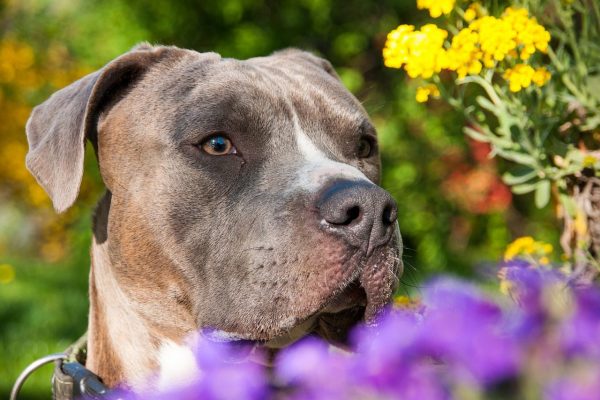
4. Training An American Staffordshire Terrier
Staffies are smart dogs so you would think that training them would be no issue at all. However, even though they are intelligent and do enjoy pleasing their humans, they can also be stubborn. For this reason, training them can take a lot of time, determination, and patience.
The most important tip you can follow is to be consistent while training. Stick to the same routine and the same rules every single day. Another thing to keep in mind is that this breed is affectionate and loyal. For this reason, you should never yell at or use physical punishment to correct misbehavior. These types of actions can do more harm than good and actually bring out aggressive behaviors in the dog. A calm but stern command can achieve more than most people realize.
You’ll learn that praise will be one of the most effective tools you can use. Rather than correcting negative behavior, try to put your focus on praising the positives. Establishing the fact that you are in control is something that should be done as quickly as possible, but it needs to be done in a caring, calm, and non-aggressive way.
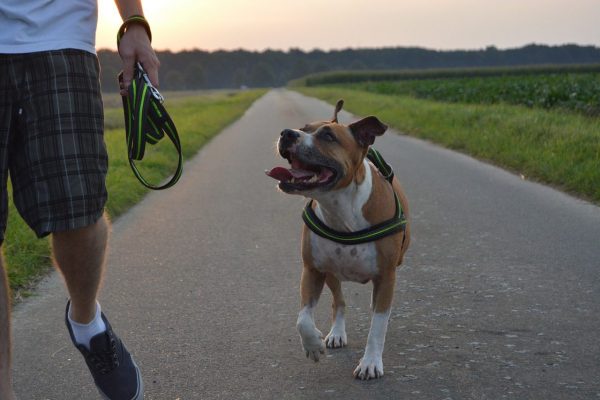
5. American Staffordshire Terrier Lifespan
AmStaffs typically live between 12-16 years. While most dogs from this breed live healthy lives, issues such as hip dysplasia can become an issue in their later years.
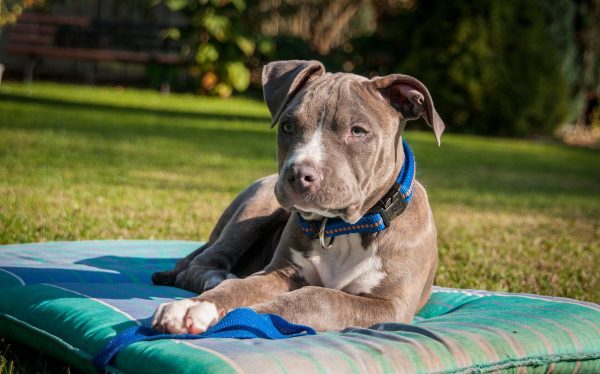
6. American Staffordshire Terrier Weight & Size
As with most breeds, the size and weight of a Staffie will vary depending on gender with males commonly being larger and weighing more.
Size
Adult Male: 17-19 inches
Adult Female: 16-18 inches
Weight: 40-60 pounds.
Keep in mind, these sizes and weights are more or less just a general rule of thumb. In some cases, mature AmStaffs can be larger or smaller and they can also weigh more or less.
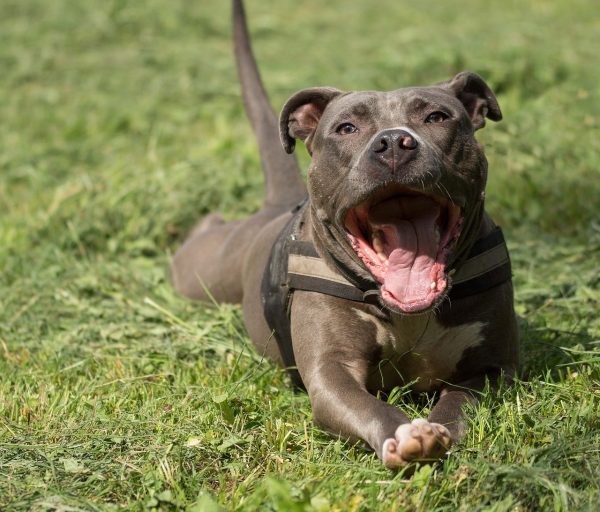
7. American Staffordshire Terrier Shedding
This is a shedding breed. After all, the only truly non-shedding breeds are those that are hairless. The good news is that their hair is fairly easy to keep up after. They will shed heavily twice per year during the shedding season, but other than that, they are minimal shedders.
Weekly brushing will certainly help you keep down the amount of fur around your home and also help your fur baby maintain the shininess of their coat. Also, a regular bathing schedule is also very beneficial.
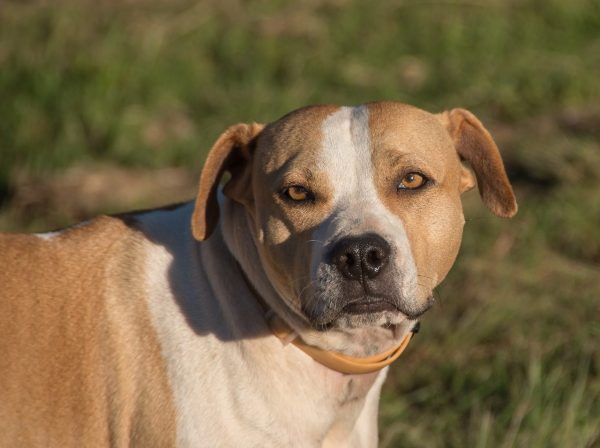
8. Is An American Staffordshire Terrier Hypoallergenic
The short answer to this question is technically no. The way it is determined whether or not a dog is hypoallergenic is how likely they are to cause a reaction to someone with allergies. Unfortunately, when it comes to AmStaffs and their shedding fur, there is a chance for reactions.
The good news is that this doesn’t necessarily mean that they should be ruled out. Rather, it simply means that baths, frequent brushing, as well as regular cleaning will need to be a part of your routine if you plan on bringing one of the fur babies home.
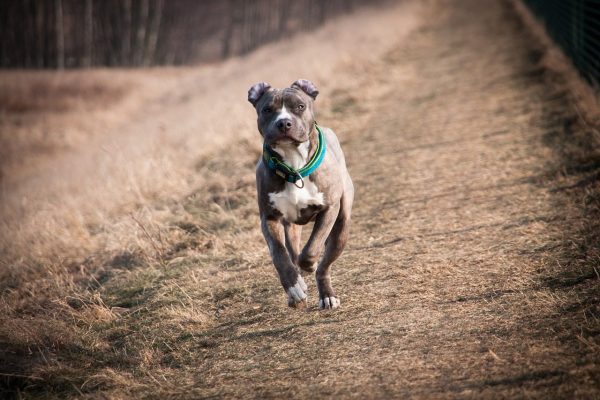
9. American Staffordshire Terrier Allergies
One important thing to keep in mind is AmStaffs are prone to allergies, especially with their skin. For this reason, it’s highly important that you keep a close eye on your furry friend’s skin and watch for any signs of redness, itchiness, or flaking. The sooner you spot any complication the better because the areas of irritated skin can spread quite quickly. If left untreated, skin allergies can even lead to infections.
Aside from being able to spot an allergic reaction, it’s also important to know potential sources so that preventative actions can be taken if needed.
Here are the most common causes:
Grass
Fleas
Inhalants (Pollen, mold, dust mites)
Contact allergies (Cotton, wool, cleaning products, perfumes, feathers)
Cigarette smoke
Food
The good news is that in most cases preventing future flare ups is quite simple once you know what’s causing them. However, determining the cause of your dog’s allergies can be somewhat tricky on your own. It’s best to leave it to professionals and have a vet examine your furry friend if they begin to show any signs of an allergic reaction.
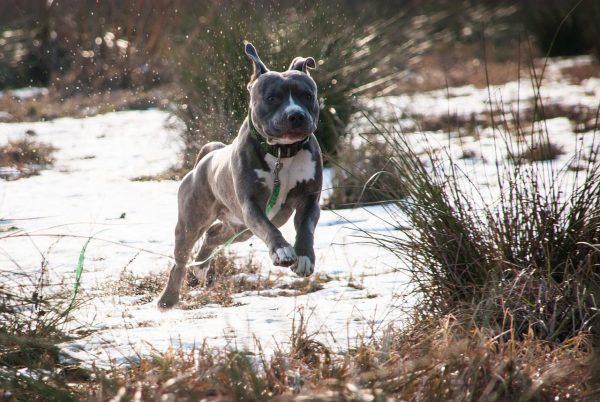
10. American Staffordshire Terrier Cost
The cost of this remarkable breed varies widely depending on whether you adopt or purchase from a breeder. Typically speaking, purchasing an AmStaff from a breeder can cost $2,500, and truthfully speaking that’s on the lower end. However, this breed is often readily available in rescues as well as shelters and adoption fees will typically cost only a $200 or less.
Honestly, adoption is the way to go. Shelters and rescues are overcrowded with this breed and in most cases it’s due to no fault of their own. There is definitely a stigma that follows the AmStaff, but the important thing to keep in mind is that most instances that have contributed to this stigma were caused by improper training and mistreatment.

Frequently Asked Questions:
Is an American Staffy a good family dog?
While there may be a stereotype that says this is an aggressive dog breed, AmStaffs actually make incredible family dogs due to their personalities and characteristics. For starters, they are amazing loyal, affectionate, and even love children. Aside from that, they make excellent guard dogs due to their level of protectiveness and they would be happy to put themselves in the line of danger for their loved ones.
Do American Staffies bark a lot?
Many would agree that this breed barks moderately. In most situations, they won’t bark to just make noise unless they are bored, lacking in attention, or are full of too much energy. However, if they feel that their family is in danger, they are not shy and will let a potential intruder know quite quickly that they are not welcome.
What are American Staffies like as pets?
They make amazing dogs, but this is not the breed for everyone. Being so loyal and affectionate, it’s important that AmStaffs receive regular love, care, and attention. They also need regular exercise to keep them from becoming hyperactive. One of the most important things a new owner of a Staffie should understand is that training from an early age when possible is very important.
Are Amstaff good guard dogs?
Yes, AmStaffs are arguably one of the best breeds when it comes to guard dogs. They are brave and loyal to their family. Plus, their size and muscular build is often enough on its own to deter a potential intruder. They also have a strong bite force and can easily take someone down that plans on causing harm to their loved ones. However, if you plan on using an AmStaff as a guard dog, it’s highly recommended that you put them into a special training course so they understand when it’s acceptable to show aggressive behaviors.
Are AmStaffs smart?
American Staffies are very intelligent dogs which comes with a wide variety of benefits, especially when it comes to training. However, their level of intelligence can also lead to stubbornness as well as the need for constant stimulation.

